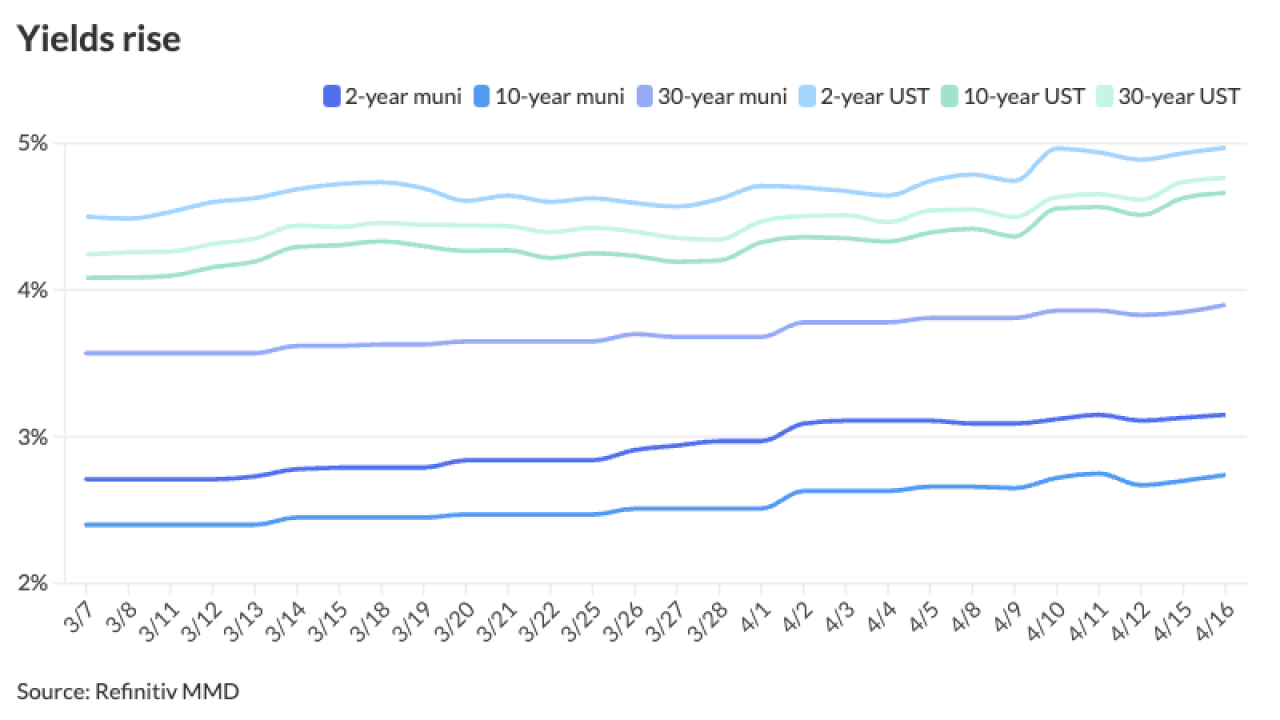The American Bar Association's committee on tax-exempt financing has requested priority guidance on municipal bonds from the Internal Revenue Service, including a definition for issue price and responses to questions about Build America Bonds and qualified school construction bonds.
Meanwhile, a group of municipal market participants advising the IRS yesterday called for a revenue procedure outlining safe harbors for certain record retention and post-issuance compliance practices at a meeting here.
The ABA committee's requests were included
At the top of the ABA's list was guidance on the definition of issue price for tax-exempt bonds, including BABs. The definition is significant because under the tax code rules, issue price is used to help determine arbitrage yield, the amount of volume cap for private-activity bonds, the amount of allowable "private use" for tax-exempt bonds, the amount of "bad money" in exempt facility bond issues, the determination of whether the issuance costs fall within the 2% limit, as well as for limitations on the sizing of certain bond issues.
The definition also became a subject of debate in 2005 when an academic study charged that some underwriters were "flipping" bonds and could not ensure they were complying with the requirements for establishing an issue price.
The current tax rule on issue price states, in part: "Generally the issue price of bonds that are publicly offered is the first price at which a substantial amount of the bonds is sold to the public" and that "10% is [deemed to be] a substantial amount." But when bonds are flipped, a dealer initially sells them at a low price to a favored institutional investor, and then bonds may be traded three or four times at successively higher prices before being sold to retail investors.
Although the Treasury Department published initial guidance on the new Build America Bonds program in April, the ABA committee is seeking information on a number of technical points, such as whether the same allocation and accounting rules apply to direct-pay BABs as to tax-exempt bonds.
The BAB program permits municipal issuers to sell taxable debt and opt to either receive a cash payment from the federal government equal to 35% of its interest costs, or have the government provide investors with a tax credit.
The committee also is seeking guidance on the allocation of two new bond programs created by the stimulus law: Recovery Zone economic development bonds and Recovery Zone exempt facility bonds. Treasury officials have identified the programs as the most likely candidates to next receive guidance, which is expected to be issued this week or next.
The stimulus law authorized $10 billion of Recovery Zone economic development bonds - which function like direct pay BABs but provide a cash payment equal to 45% of interest costs - and $15 billion of Recovery Zone exempt facility bonds, a new type of private activity bond.
Although the IRS has issued allocations for the $22 billion of qualified school construction bonds authorized by the stimulus law, the committee is seeking further guidance on technical points, many of them similar to the requests made for BABs.
The ABA committee also asked for guidance on record-retention requirements for municipal bonds, including potential safe harbors.
Meanwhile, members of the tax-exempt bond project team for the advisory committee on tax-exempt and government entities, or ACT, a separate group of muni market participants advising the IRS, addressed the same issue. They told IRS officials - including Shulman and tax-exempt bond director Clifford Gannett - that muni issuers need practical advice on what they should be doing to ensure that are retaining the proper records to remain compliant with the tax law after the bonds are issued.
Since tax-exempt bonds are often outstanding for 30 years or more and have to comply with a number of detailed and complex rules, the administrative burden of record retention is "unusually great," the report stated.
Michael Bailey, an ACT member and partner at Foley & Lardner LLP in Chicago who worked at the IRS in the 1990s, pointed out at the meeting yesterday that the way direct-pay BABs are processed amplifies the importance of record retention. The form issuers must file every six months with the IRS to request payments implies "there's a statement of continued compliance," Bailey said. But with traditional tax-exempt bonds, there is not the repeated, implied affirmation of compliance.
Although safe harbors would be appreciated, the IRS should not attempt to draft detailed standards for record retention, since it would be difficult for such standards to work for different types of bonds and records, the report stated.
The team also proposed reasonable procedures to ensure post-issuance compliance, as well as recommendations for safe harbors for record retention that would require detailed records be kept for a minimum of six years, but not longer than three years after the bonds are retired. After the six-year period, issuers would be able to simply provide summary records.
Gannett said yesterday that it was "an excellent report" that will "receive serious consideration" by the tax-exempt bonds branch, as well as the IRS office of chief counsel.
Joan M. DiMarco of BondResources Partners LP in Philadelphia and John G. Pasicznyk of the Dormitory Authority of New York State joined Bailey on the team that made the presentation.





